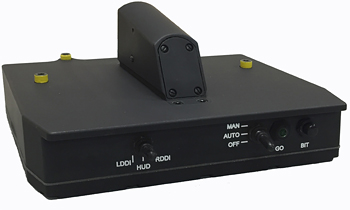
The F/A-18A/B, Head Up Display (HUD) camera is a new configuration operating on the Lot XII and lower series F-18s.
Part Number 93 - 2040 - 501 NSN 5821-01-662-2657 MX-10403A/AXQ
Part Number 93 - 2040 - 502 NSN 5821-01-662-2666 MX-10403B/AXQ
Features
- The new camera has been flown by the US Navy and the following enhanced features were noted:
- Better color and higher resolution
- FOV extended coverage including recording of all the azimuth heading numerics and the complete roll angle information in the Navigation mode.
- Intended low-light level coverage including night recording
- Two Built-In Test (BIT) features
General Specifications
Environmental Specifications*
* Based on similarity to tests conducted on F/A-18/C/D/E/F
| FOV Horizontal | Degrees Vertical | FOV Horizontal | Milliradians Vertical | Application |
| 22.06 | 16.63 | 384.9 | 290.3 |
HUD Special Boresighted to all US Navy requirements |
Airborne Video Sales
818-531-3206
818-842-2141 (main)
mail@photosonics.com